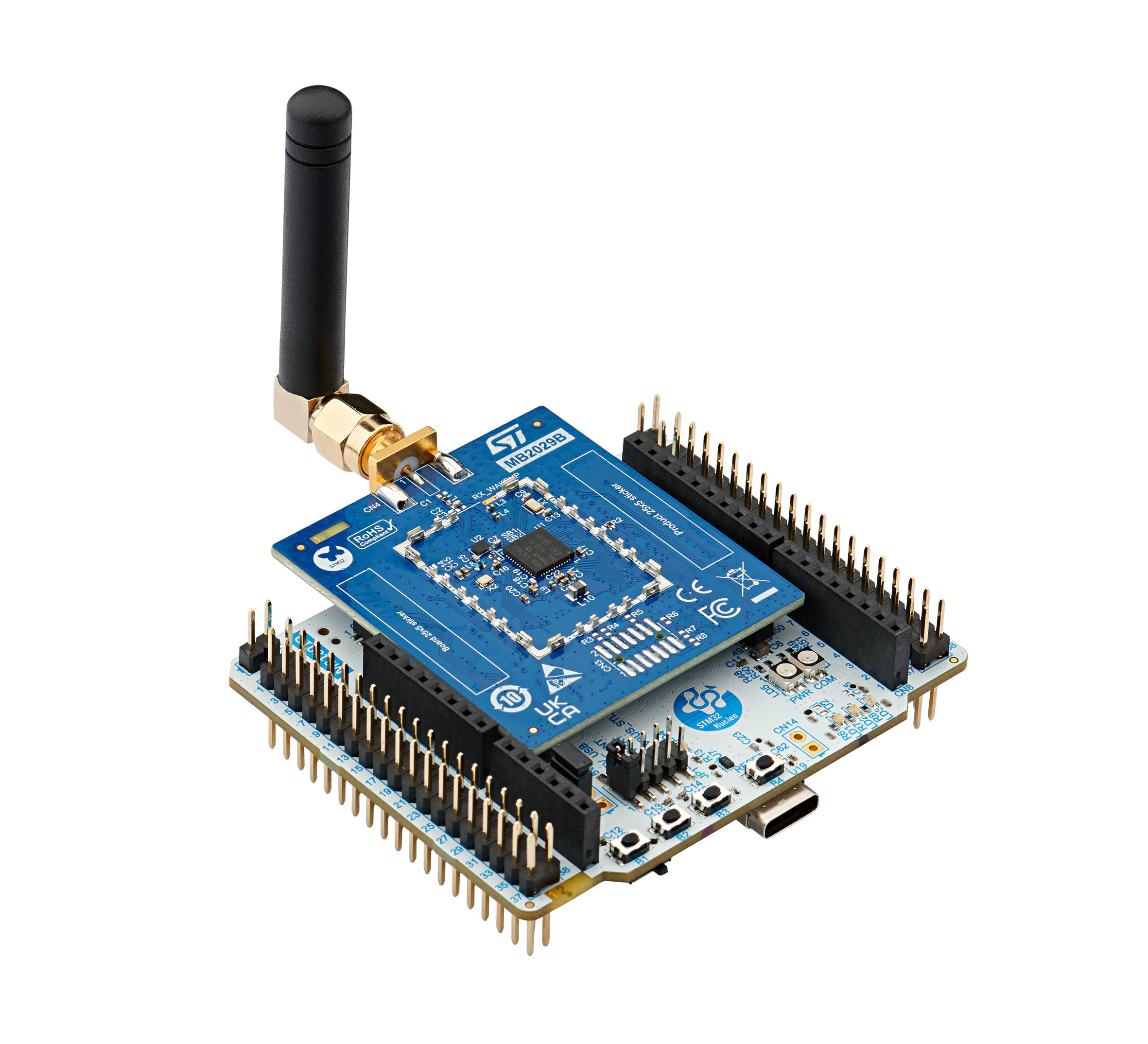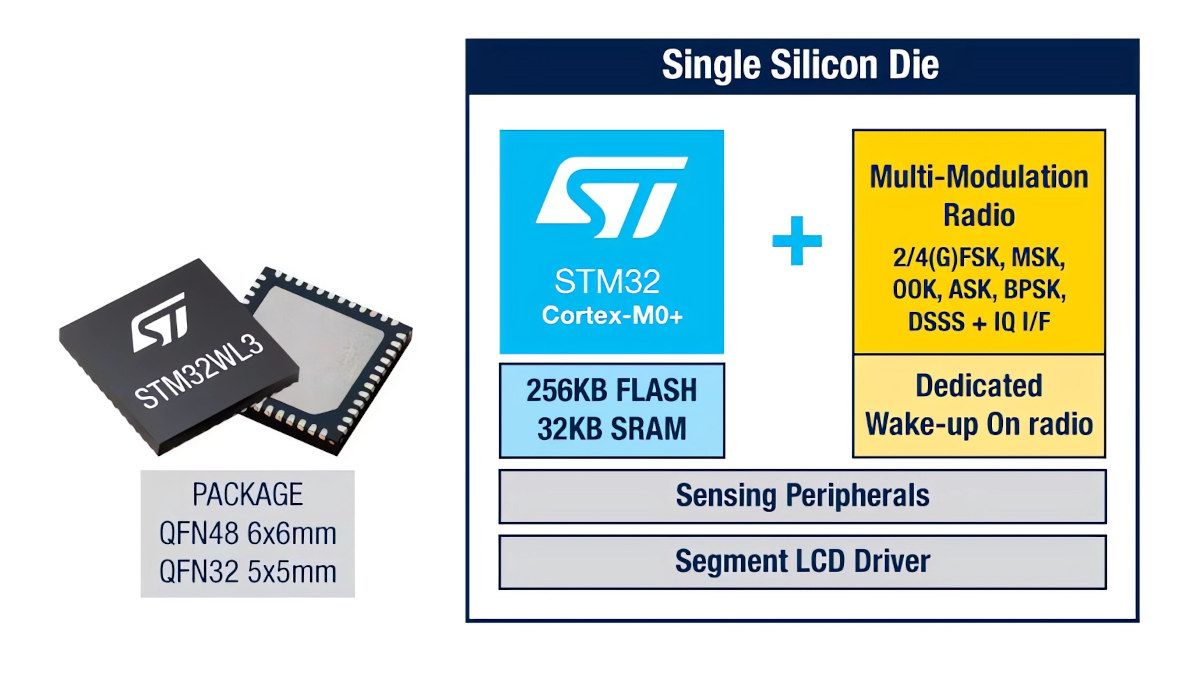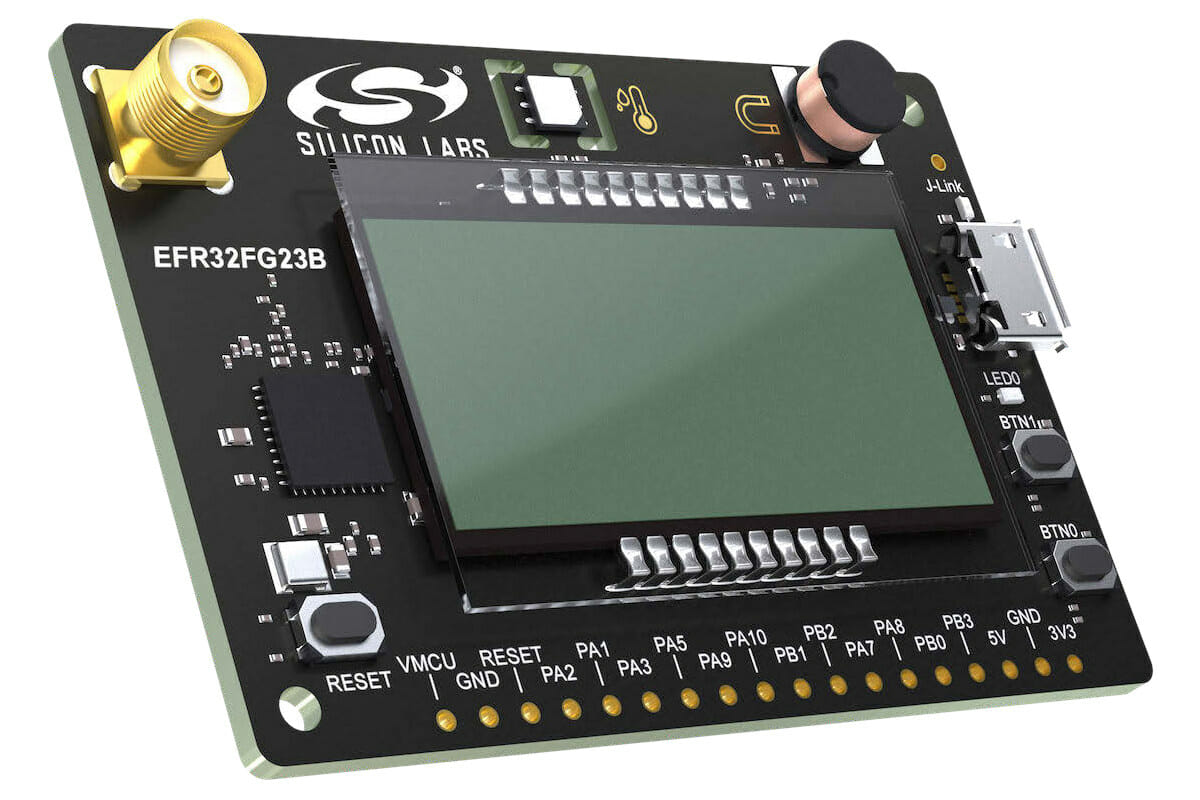STMicro unveiled the STM32WL3 sub-GHz wireless MCU family last year and has now announced the general availability of the STM32WL33 Arm Cortex-M0+ microcontroller, along with two development boards namely the NUCLEO-WL33CC1 and NUCLEO-WL33CC2 for battery-powered smart meters and smart building and industrial monitoring solutions using wireless M-Bus, Sigfox, WiSun, LoWPAN or Mioty LPWAN protocols among others. The NUCLEO-WL33CC1 and NUCLEO-WL33CC2 development boards look the same, but the former supports 826-958 MHz high-band frequencies, while the latter handles 413-479 MHz low-band frequencies. STMicro NUCLEO-WL33CC1/2 specifications: SoC – STMicro STM32WL33CCV6 MCU Core – Arm Cortex-M0+ up to 64 MHz Memory – 32KB SRAM with full retention Storage 256KB flash 1 KB OTP flash (user data) Sub-GHz Wireless 413-479 MHz or 826-958 MHz frequency bands with OOK, ASK, 2(G)FSK, 4(G)FSK, D‑BPSK, and DSSS modulations Compatible with proprietary and standardized wireless protocols such as WM-Bus, Sigfox, Mioty, KNX-RF, and IEEE 802.15.4g Low-power autonomous wake-up […]
STMicro STM32WL3 sub-GHz wireless MCU targets smart metering, smart building, and industrial monitoring
STMicroelectronics STM32WL3 is an Arm Cortex-M0+ low-power, long-range, multi-protocol wireless microcontroller working in sub-GHz ISM frequency bands, namely 413MHz – 479MHz, 826MHz – 958MHz, and soon 169MHz (2024) for protocols such as wireless M-Bus (mode N) and Wize. The multi-protocol and multi-modulation radio supports 4-(G)FSK up to 600kbit/s, 2-(G)FSK, (G)MSK, DBPSK, DSSS, OOK, ASK modulation schemes suitable for proprietary and standardized wireless protocols such as Sigfox, KNX, WiSun, mioty, M-Bus, and others. STMicro also claims to have implemented new power-saving features that extend the battery life to up to 15 years. STM32WL3 key features and specifications: MCU Core – Arm Cortex-M0+ up to 64 MHz Memory – 16KB or 32KB SRAM with full retention Storage 128KB or 256KB flash 1 KB OTP flash (user data) Wireless RF bands – 413-479 MHz, 826-958 MHz, and soon 169 MHz Data rate – 0.1 to 600 kbit/s Tx power – up to […]
Arm PSA Certified Level 3 Sub-GHz wireless SoCs support Amazon Sidewalk, mioty, Wireless M-Bus, Z-Wave…
Silicon Labs has announced two new sub-GHz wireless SoCs with EFR32FG23 (FG23) and EFR32ZG23 (ZG23) devices adding to the company’s Gecko Series 2 Cortex-M33 platform. Both FG23 and ZG23 support up to one mile (~1.6 km) wireless range, 10+ year battery life on a coin-cell battery, are certified with Arm PSA Level 3 security, and support “advanced wireless technologies” such as Amazon Sidewalk, mioty, Wireless M-Bus (WM-Bus), Z-Wave, and proprietary IoT networks. Silicon Labs explains the chips’ ultra-low transmit and receive radio power (13.2 mA TX at 10 dBm, 4.2 mA RX at 920 MHz) and RF implementation (+20 dBm output power and -125.3 dBm RX at 868 MHz, 2.4 kbps GFSK), makes the long-range and long battery life possible. The ZG23 is designed for Z-Wave applications with Long Range and Mesh connectivity and can be integrated into either end devices or gateways. The company is also working on ZG23-based […]
MIOTY Silicon Vendor Agnostic, Scalable LPWAN Standard to Take on LoRaWAN, NB-IoT
[April 6th update: The article was updated to reflect Fraunhofer invented the technology] There are plenty of LPWAN (Low Power Wide Area Networks) standards designed for low power, low bitrate and long-range connectivity with the most popular currently being NB-IoT and LoRaWAN. But Texas Instruments has joined other smaller companies (Fraunhofer, Ragsol, STACKFORCE, WIKA…) to form the MIOTY alliance in order to develop and promote a new LPWAN standard operating in the sub-GHz range called MIOTY. Texas Instruments explains MIOTY was born due to a lack of scalability and robustness (interferences issues) of current LPWAN solutions. But just like other similar low power WAN standards, it aims to support long-range while achieving long battery life, but MIOTY is also supposed to help IoT developers mitigate performance degradation in high-node-count networks. MIOTY works in the same license-free bands (868 MHz, 915 MHz …) as LoRa radios with no costs involved to […]






